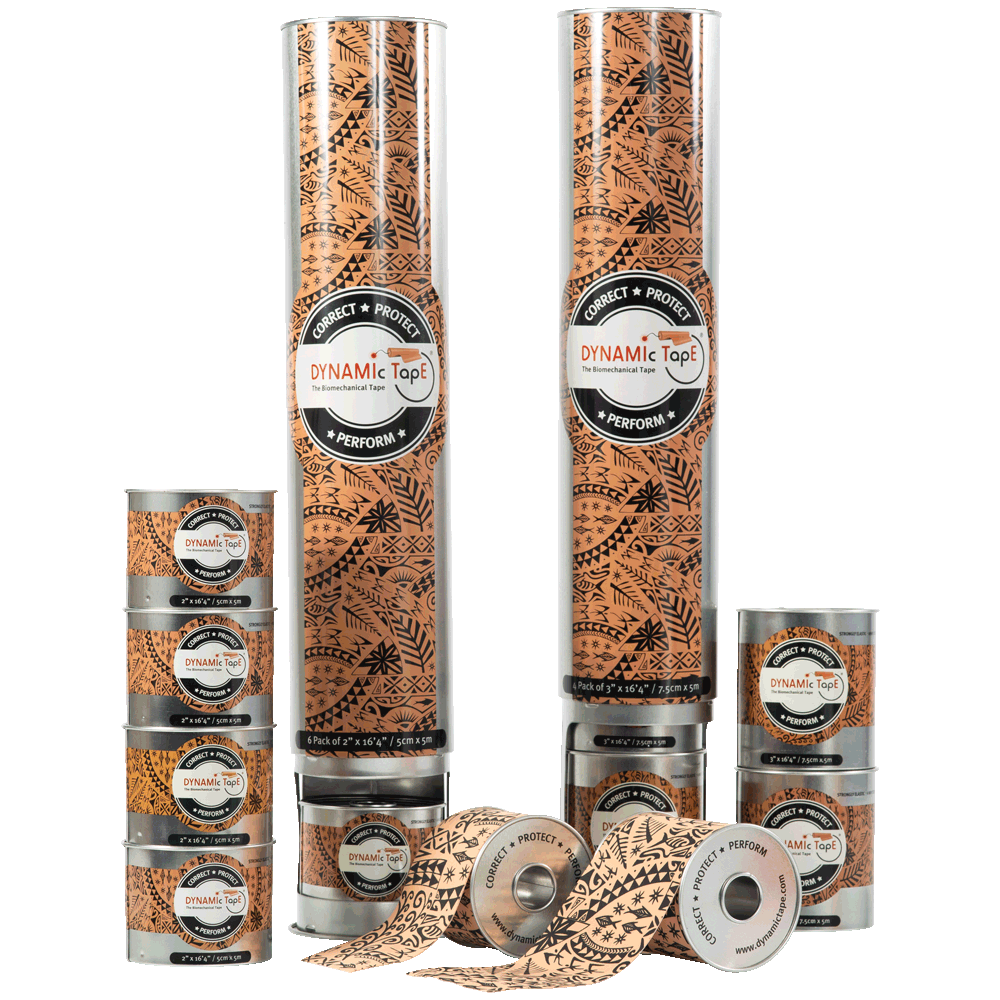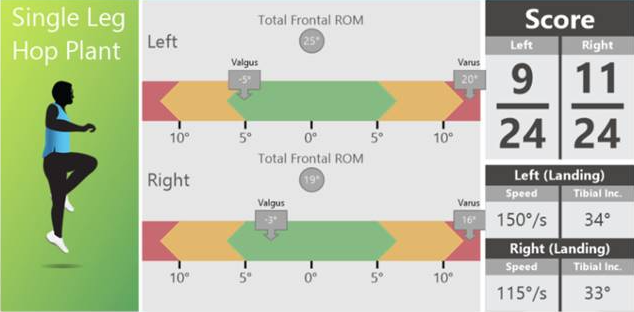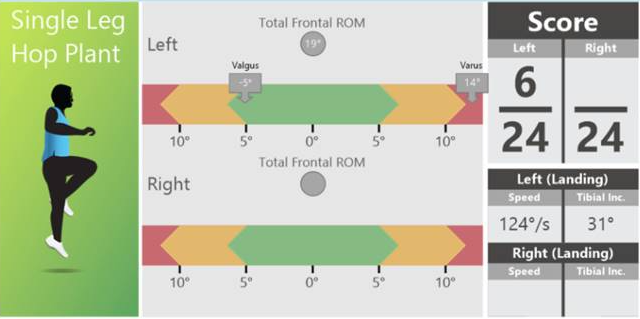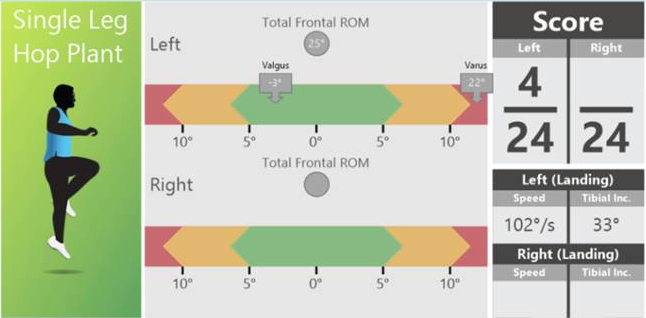Clinical Reasoning is critical
Determining what ‘deficits’ exist and their relationship to the presenting condition is critical. This following example illustrates this nicely. The subject has quadriceps weakness due to L3-4 nerve root compression. He demonstrates increased frontal plane motion (i.e. hip adduction) and velocity during load acceptance phase when landing from a hop. He also has increased knee flexion. In other words, he has insufficient strength to control the load and collapses into knee flexion and wobbles about at the hip. This was measured using DorsaVi.
Interestingly but not surprising when given due consideration, when the hip is taped to resist adduction and internal rotation, the velocity of the motion is reduced maximally however the magnitude remains unchanged and the tibial inclination (indicative of knee flexion) remains the same. In other words, he is still not able to attenuate the force and control the knee flexion moment at the knee so must still bend the knee and move at the hip but the tape is resisting hip motion so the velocity is reduced.
The key point being that our technique must be based on sound clinical reasoning and a thorough examination. Determining the underlying cause for what is observed is critical. Simply, observing increased frontal plane motion and therefore taping the hip does not address the reason why this motion is occurring and that is due to a quads deficit. If the quadriceps were fine and the glutei were weak, taping the hip would be appropriate. Ultimately, building strength is required however Dynamic Taping may be useful to improve the quality of exercise and to reduce risk of re-injury during transition periods e.g. if this presentation was following an ACL repair the tape may be useful as the athlete transitions through various stages to higher risk activities e.g. jogging, jumping/landing/changing direction etc. as it is often necessary to perform the tasks in a controlled way in order to build capacity such that they can control those movements.
When taping to create a knee extension moment (resist the collapse into flexion) which addresses the force that the quadriceps is unable to manage sufficiently, knee flexion and frontal plane hip magnitude and velocity are reduced. By helping manage the forces on landing in the sagittal plane, the compensation at the hip is not required.
The importance of the high, 4-way stretch of the Dynamic Tape Global was demonstrated with this evaluation. In all three conditions (and there were multiple repetitions of each – average shown) the athlete’s ability to flex the knee in preparation for the jump was not impaired by taping the knee into an extension direction.
Read more on our Research page.












